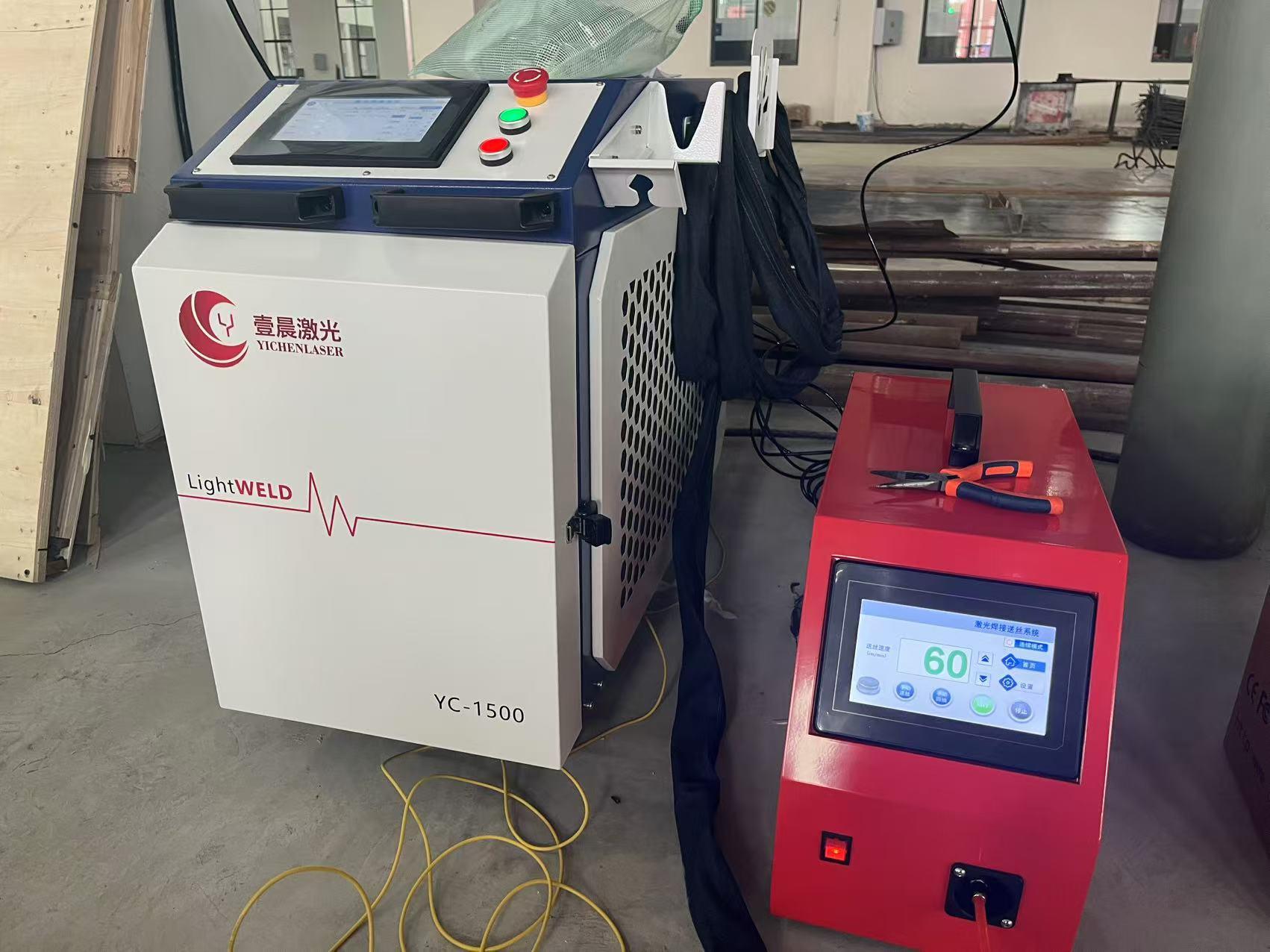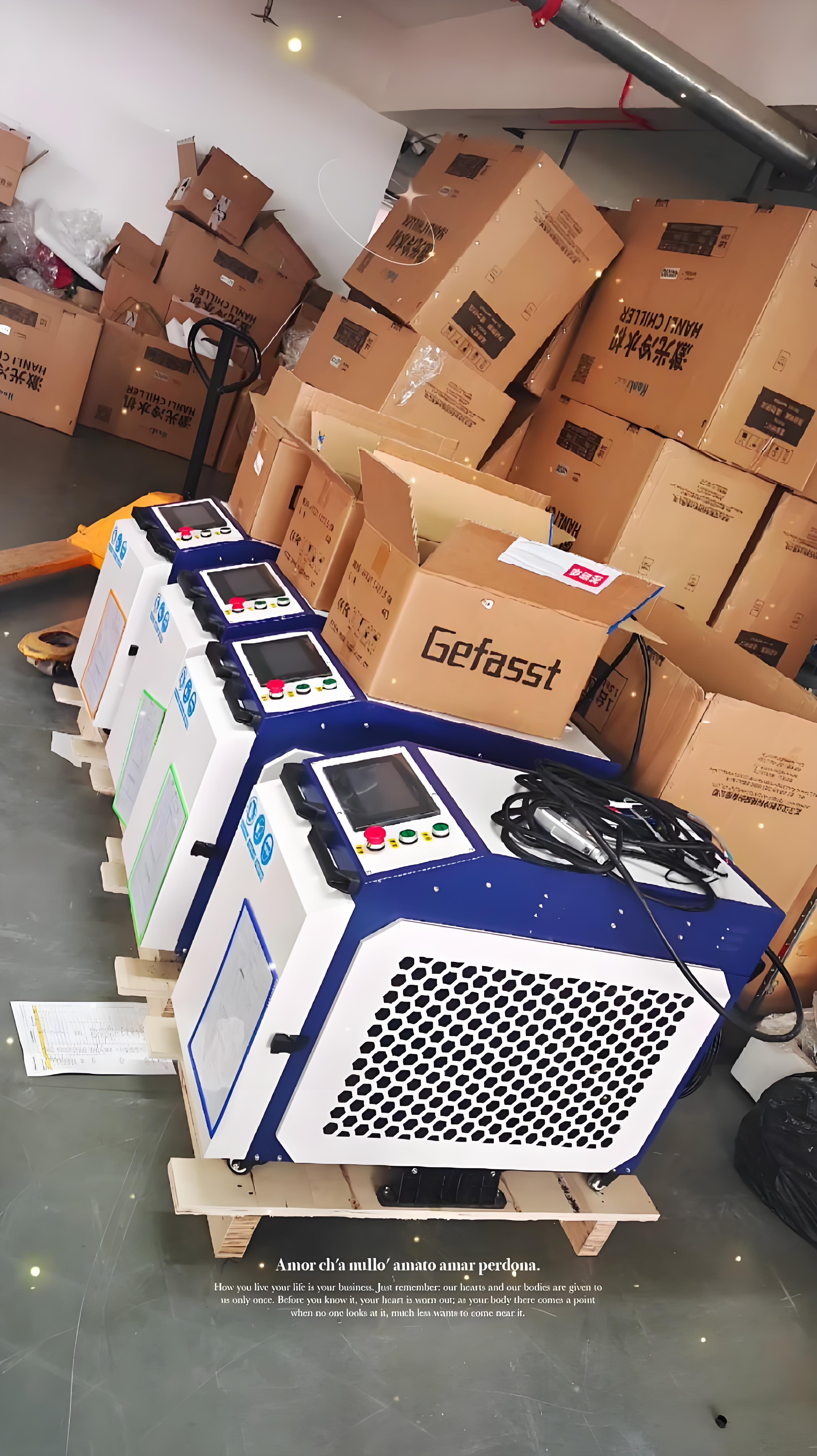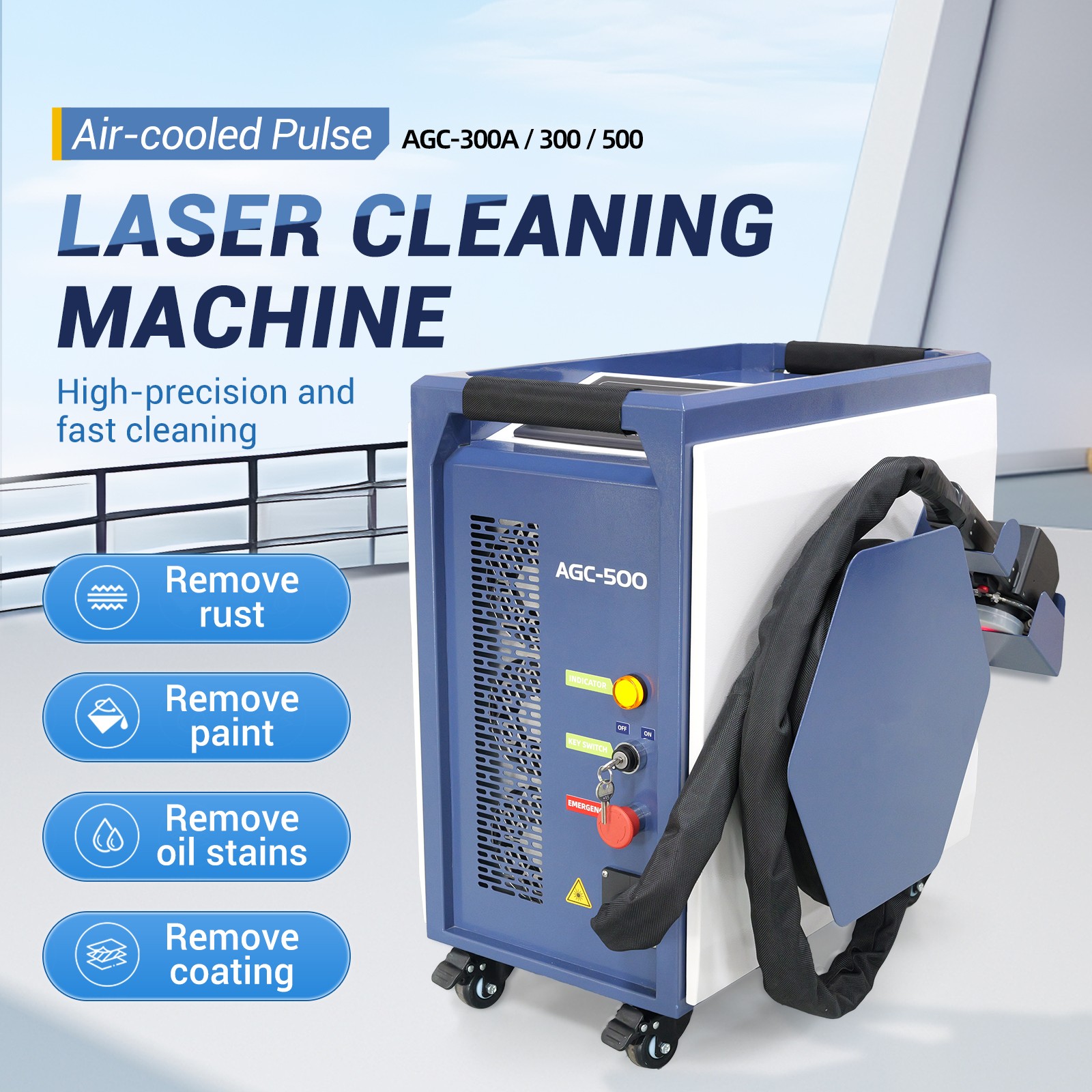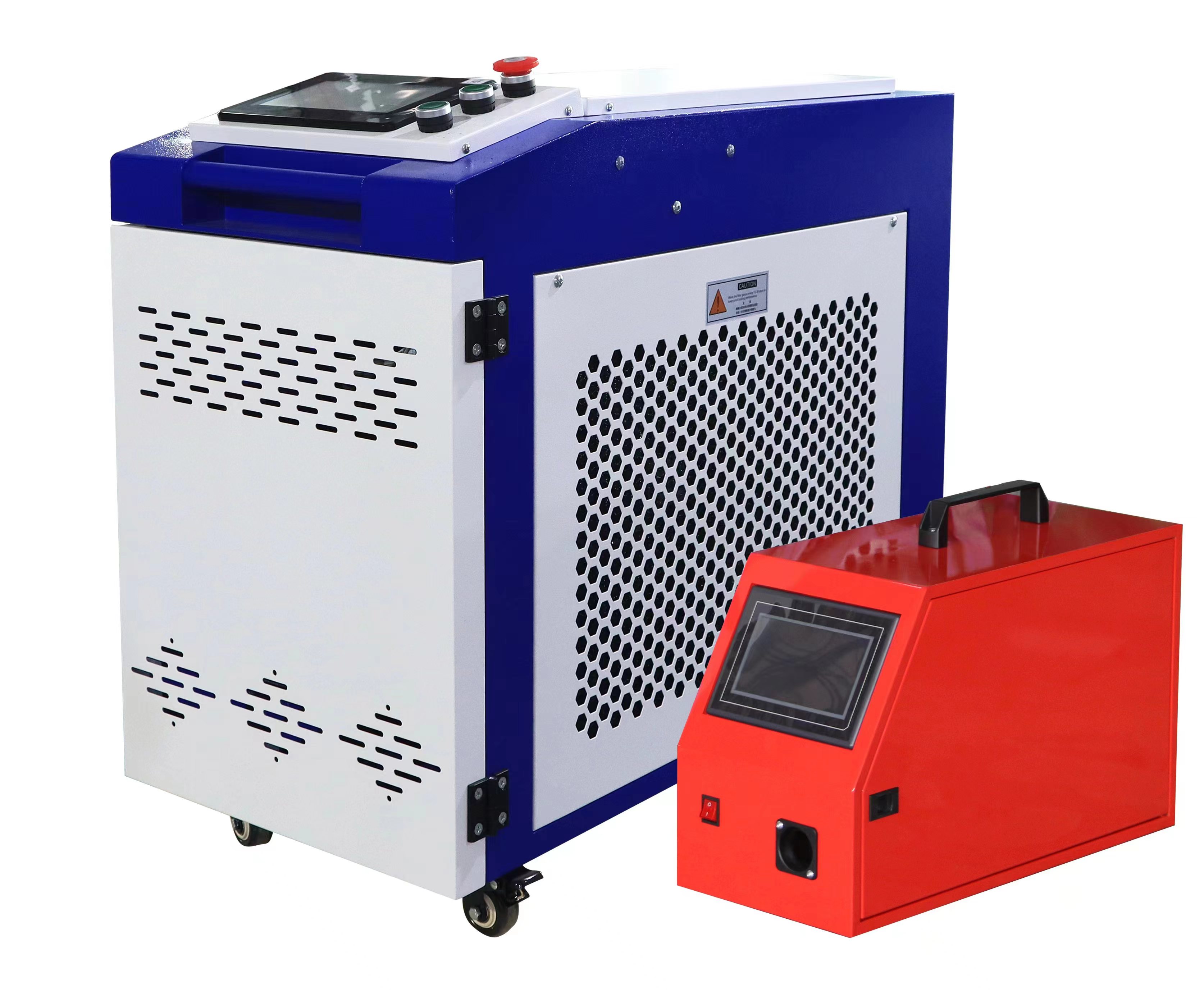As a seasoned professional in the laser equipment industry, I often get asked about the safety of laser rust removal machines. Laser rust removal, as an efficient and eco-friendly surface treatment technology, has gained significant traction in industries, shipbuilding, and cultural relic restoration in recent years. However, many people are concerned about its safety: Are laser rust removal machines harmful to the human body? Today, I’ll dive deep into this topic from an expert perspective, drawing on practical experience to clarify the potential risks and necessary precautions for using laser rust removal machines.

How Laser Rust Removal Machines Work and Their Features
To determine whether laser rust removal machines pose a risk to human health, we first need to understand how they operate. These machines use a high-energy laser beam to irradiate the surface of an object, instantly vaporizing or peeling off rust, oil, or coatings through photothermal or photochemical effects. Unlike traditional methods like sandblasting or chemical cleaning, laser rust removal doesn’t rely on chemical agents or physical abrasion, making it highly efficient, precise, and environmentally friendly.
The core component of a laser rust removal machine is the laser, typically a fiber laser with a wavelength around 1064 nanometers (near-infrared light). This concentrated laser energy can quickly remove surface contaminants, but it’s precisely this high energy that raises potential safety concerns. Below, I’ll analyze the potential risks to the human body from several key angles.
Potential Hazards of Laser Rust Removal Machines
When using laser rust removal machines, safety concerns primarily revolve around the following aspects:
1. Laser Radiation Damage to Eyes and Skin
The laser emitted by rust removal machines is a high-energy beam that can cause severe harm if it comes into direct contact with the human body. Eyes are particularly vulnerable, as laser exposure can lead to retinal burns or even permanent blindness. Skin exposed to the laser may also suffer burns, especially with high-power equipment.
I recall an incident during a factory visit where a worker, who wasn’t wearing protective goggles, was briefly exposed to reflected laser light. He experienced eye discomfort but fortunately received prompt medical attention, avoiding permanent damage. This experience underscored the critical importance of protective gear.
2. Airborne Particles and Dust
During laser rust removal, rust, coatings, or other materials are vaporized or dislodged, generating fine particles or fumes. These airborne particles can be inhaled into the respiratory system, potentially causing discomfort or, with prolonged exposure, posing a threat to lung health. This risk is particularly pronounced in poorly ventilated environments where dust concentration can build up.
3. Noise Hazards
High-power laser rust removal machines can produce noise when the laser interacts with the material. While the noise level is generally lower than that of traditional mechanical rust removal, prolonged exposure to high noise levels may still affect hearing.

4. Electrical and Equipment Failure Risks
Laser rust removal machines are sophisticated devices involving high-voltage power supplies and complex circuits. Improper maintenance or operator error could result in electrical shock risks. Additionally, equipment malfunctions may cause unintended laser beam leaks, increasing safety hazards.
Here’s a table summarizing the potential hazards and their impacts for clarity:
| Potential Hazard | Affected Area | Possible Consequences | Likelihood |
|---|---|---|---|
| Laser Radiation | Eyes, Skin | Retinal burns, skin burns | Medium |
| Airborne Particles & Dust | Respiratory System | Respiratory irritation, lung damage | Low |
| Noise | Hearing | Hearing loss | Low |
| Electrical Shock/Failure | Whole Body | Electric shock, accidental injury | Very Low |
How to Safely Use Laser Rust Removal Machines?
Given these potential hazards, how can we mitigate the risks? Based on years of experience, here are practical safety measures to follow:
1. Wear Professional Protective Gear
Protective Goggles: Use goggles designed for the laser’s wavelength (typically 1064 nm) to fully block laser radiation. Regular safety glasses won’t suffice—never use them as a substitute.
Protective Clothing: Wear heat-resistant, laser-resistant clothing to cover exposed skin.
Dust Masks: In poorly ventilated environments, use KN95 or higher-grade masks to prevent inhalation of dust particles.
During a training session with new operators, I once emphasized the importance of protective goggles. One young worker initially found them cumbersome but changed his mind after witnessing the intense light produced by the laser on a metal surface. He immediately requested full protective gear. Such real-world experiences highlight the need for proper safety awareness.
2. Optimize the Work Environment
Ventilation Systems: Ensure the workspace has adequate ventilation, ideally with industrial dust collectors or fume purifiers to remove airborne particles promptly.
Isolated Work Area: Set up barriers around the laser rust removal zone to prevent unauthorized personnel from entering and reduce the risk of accidental exposure.
Noise Control: If the equipment generates significant noise, wear earplugs or earmuffs to minimize hearing damage.

3. Follow Standardized Operating Procedures
Training: All operators must undergo professional training to understand the equipment’s operation and safety protocols. Untrained individuals should never operate the machine.
Regular Maintenance: Routinely inspect the laser, power supply, and control systems to ensure stable operation and prevent malfunctions.
Emergency Shutoff: Familiarize yourself with the location of the emergency shutoff button to quickly cut power in case of an incident.
4. Adhere to Safety Standards
Laser equipment is classified according to international safety standards, such as IEC 60825-1. Most laser rust removal machines fall under Class 4 (high-risk) lasers, requiring strict adherence to safety protocols. In China, standards like GB 7247.1-2012 also outline clear safety requirements for laser equipment.
Comparing the Safety of Laser Rust Removal with Traditional Methods
To provide a comprehensive view of laser rust removal safety, I’ve compared it with traditional rust removal methods (e.g., sandblasting, chemical cleaning) to highlight its advantages and drawbacks.
| Rust Removal Method | Safety Features | Environmental Impact | Human Health Impact |
|---|---|---|---|
| Laser Rust Removal | Requires protective gear, laser radiation risk | Minimal chemical pollution, low dust | Eye/skin protection critical, dust management needed |
| Sandblasting | High dust, noise; requires protective gear | Severe dust pollution | Higher respiratory/hearing risks |
| Chemical Cleaning | Risk of chemical poisoning, skin corrosion | Chemical waste pollution | High skin/respiratory risks with long-term exposure |
As the table shows, laser rust removal is safer and more environmentally friendly than traditional methods, but its laser radiation risk demands special attention. Proper protective measures are key to ensuring safety.
Real-World Safety Cases with Laser Rust Removal
To give you a clearer picture of laser rust removal safety, here are two real-world examples:
Case 1: Laser Rust Removal in Ship Repair
A shipyard adopted laser rust removal machines to clean rust from ship hulls. Initially, a worker who neglected to wear protective goggles experienced temporary vision blurriness due to reflected laser light. The shipyard promptly strengthened training, provided professional protective gear, and installed isolation barriers. No further incidents occurred, and the equipment improved efficiency by 30%.
Case 2: Precision Application in Cultural Relic Restoration
In a project to restore an ancient building, a laser rust removal machine was used to clean oxide layers from bronze artifacts. With proper ventilation and full protective gear, the project was completed smoothly without any safety issues. This reinforced my belief that scientific operation and strict precautions are the foundation of safe laser rust removal.
Impact on Special Populations
Some may wonder whether laser rust removal machines pose additional risks to pregnant women, children, or sensitive individuals. The answer is yes, as laser radiation and dust can have a greater impact on vulnerable groups. Here are key recommendations:
Pregnant Women: Avoid entering laser operation areas to protect fetal health from radiation and dust exposure.
Children: Children are more sensitive to lasers and should be strictly prohibited from entering operation zones.
Sensitive Individuals: Those with respiratory conditions or skin sensitivities should use higher-grade protective gear and consult a doctor before working in such environments.

Choosing a Safe Laser Rust Removal Machine
With numerous brands and models on the market, ranging from 50W to 2000W, safety is a critical factor when selecting a laser rust removal machine. Here are my recommendations:
Choose Reputable Brands: Opt for brands with CE or ISO certifications for guaranteed safety performance.
Focus on Safety Features: High-quality machines often include automatic laser shutoff and overload protection to minimize risks.
Match Power to Needs: For small projects, choose low-power machines (e.g., 100W-200W) to reduce radiation intensity. For large industrial projects, high-power machines are suitable but require enhanced precautions.
After-Sales and Training Support: Select suppliers offering operator training and regular maintenance to ensure long-term safe operation.
Conclusion: Are Laser Rust Removal Machines Safe?
In summary, laser rust removal machines are safe and efficient tools when used correctly, but their high-energy lasers and operating environment pose potential risks, primarily eye and skin damage from radiation and respiratory risks from dust. By wearing professional protective gear, optimizing the work environment, and adhering to strict operating procedures, these risks can be minimized.
As someone deeply involved in this field, I understand that technological advancements must be paired with robust safety measures. Laser rust removal has immense potential, but safety must always come first. I hope this article provides a clear understanding of the safety considerations and empowers you to use this technology confidently.

Frequently Asked Questions
1. Can the radiation from laser rust removal machines cause cancer?
There’s no evidence suggesting that the near-infrared laser (1064 nm) used in rust removal machines causes cancer. The primary risk is physical burns from radiation, not ionizing radiation that could lead to cancer. Proper protective gear eliminates this risk.
2. Are laser rust removal machines suitable for home use?
No, they’re not recommended for home use. These are industrial-grade devices with complex operations and inherent risks, and home environments typically lack the necessary ventilation and safety measures.
3. How can I tell if laser protective goggles are qualified?
Qualified goggles should specify the applicable laser wavelength (e.g., 1064 nm) and optical density (typically OD4+ or higher). Choose reputable brands and check for certification marks.
4. Do the dust particles from laser rust removal require special handling?
Yes, use industrial dust collectors or fume purifiers to capture dust and prevent inhalation. Dust composition varies by material, and some may contain heavy metals, requiring proper disposal.
5. What qualifications are needed to operate a laser rust removal machine?
In China, there are no specific qualification requirements, but operators should undergo professional training to understand the equipment and safety protocols. Some industries may require relevant professional certifications.






